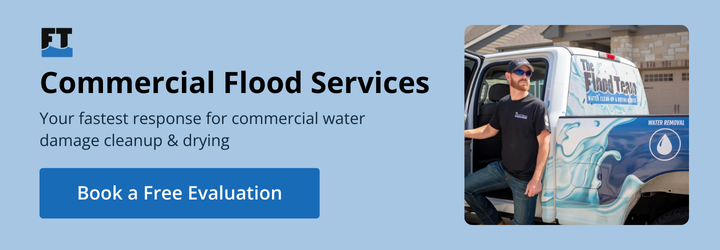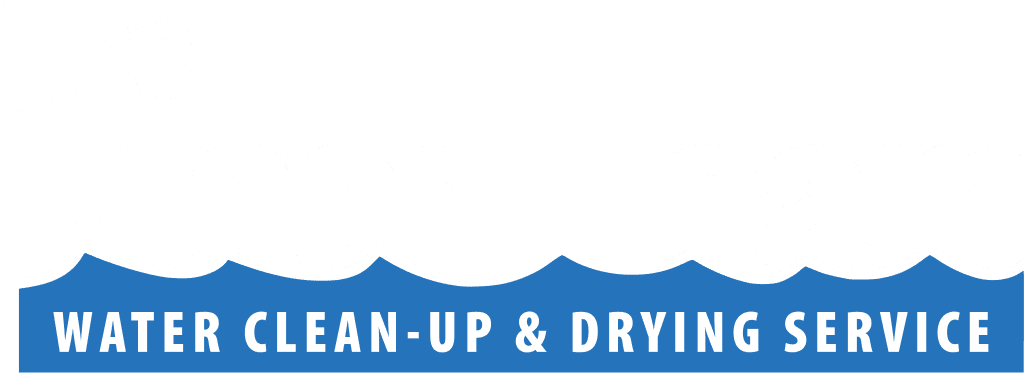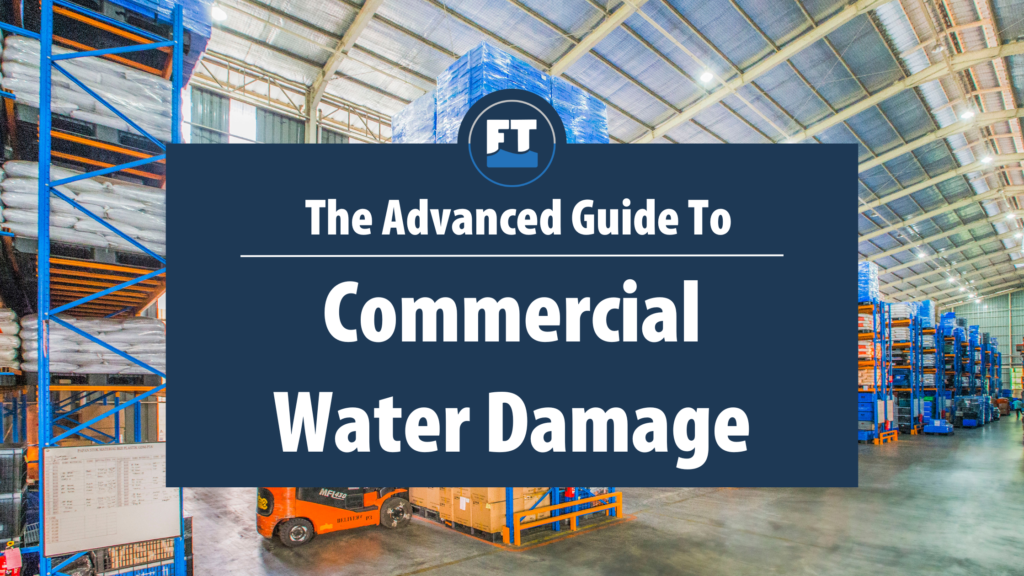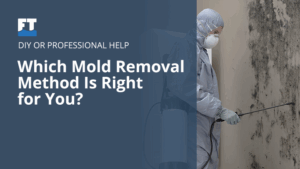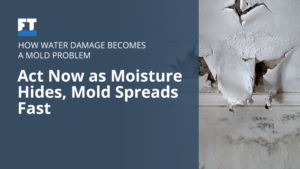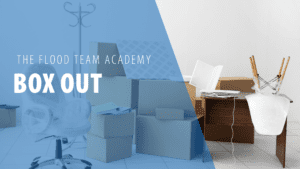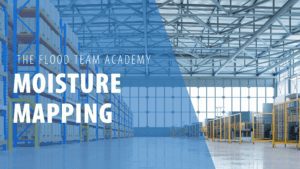The Advanced Guide To Commercial Water Damage
When Water and Work Don’t Mix, Call a Remediation Specialist for the Fix
Unless you’re Olympic Gold Medalist, Michael Phelps, or even a professional fisherman, water and work simply don’t mix. Here’s why! When your commercial space is suddenly hit with water damage, no matter the cause, it can send shock waves throughout your property:
- Employees experience shock from interrupted workflow and possible damage and setbacks to their progress.
- Valued customers who rely on your products or services may feel at a loss when doors close, even for a short period.
- Oh, and consider the costs! It goes without saying, closing business doors to address water damage can impact your bottom line.
For all these reasons and more, it’s important to address moisture damage right away and NOT just “in the nick of time.”
What is Commercial Water Damage?
Commercial water damage happens when water intrudes into spaces for which it is unintended, leading to damage both seen and unseen. This can be the result of anything from flooding to a fire sprinkler malfunction or other plumbing problems. According to the Insurance Information Institute (III), roughly 14,000 homeowners experience water damage each day. Though the statistic for commercial water damage instances is far lower at roughly 300 a day, the damage caused on commercial properties can be just as severe, if not more so.
What is Commercial Water Remediation?
Now for the good news: Commercial water damage is not a permanent problem, especially if you act fast. Water remediation involves drying, cleaning, sanitizing, and restoring property and the materials impacted. Hiring a water remediation specialist like The Flood Team to help you address water intrusion speedily is key to minimizing or preventing further water damage. If left untreated, secondary damage such as rapid mold growth and other airborne viruses and bacteria can affect your workspace health. The most important part of water remediation after identifying the water source and stopping the flow, is beginning the drying process immediately.
Water Remediation Generally Includes 4 Key Components:
1. After the water source has been identified and stopped, water extraction is top of mind for a water remediation specialist. The extent of the water damage will determine the course of action for water removal, but the process often requires the use of pumps and vacuums to remove all standing water. Some wet items can be salvaged by wringing, pressing, or squeezing excess water out to improve drying outcomes once that stage begins.
2. After extracting as much excess or standing water as possible in step one, the next step is to dry impacted areas and materials. In order to restore working conditions and prevent mold growth, all materials must be thoroughly dried to industry standards.
Drying involves reducing and eliminating high water moisture levels through a drying science called psychometry. Psychometry focuses on managing humidity levels, airflow, and temperature in order to achieve the quickest and most effective drying outcome. Since time is critical, speed is essential. In as little as 48 hours, mold spores, which require moist conditions to thrive, can grow and wreak havoc on the health of employees and visiting customers. Water remediation specialists often utilize air movers, dehumidifiers, and moisture meters to detect the presence of water in hard to reach places, so mold does not set up shop in moist conditions.
3. Additionally, once the impacted area and materials are dried to industry standards, remediation’s next step involves cleaning and sanitizing. Antimicrobial and disinfectant treatments are used to remove harmful bacteria on surfaces and materials. This step aims to stop the spread of harmful bacteria, disease, and rapid mold growth. Depending on the water category (discussed later) or level of water cleanliness, cleaning and sanitizing measures are taken on a case-by-case basis. At times, water remediation specialists use air scrubbers to clean and sanitize the air, especially when dealing with sewage water contaminants.
4. The final step to water damage remediation is restoration. The goal is to restore property and belongings to their pre-water-emergency condition. Depending on how the area is impacted and how the materials are affected, this step also will vary on a case-by-case basis.
Commercial Water Damage Evaluation
In order to identify the best course of action, professionals such as The Flood Team will be on site fast to quickly provide a FREE evaluation of your water emergency. This process will identify the extent of the water damage and the category of water in order to determine how best to proceed.
There are four tiers of water damage identified by how widespread the damage is. Tier or class one involves the least amount of water damage, whereas tier four or class four is the most widespread or extensive. Surprisingly enough, however, tier three water damage is the most severe as it includes water pouring from the ceiling down to the floor.
Another aspect a professional will evaluate is the water category. Water category is based on the level of contamination within the water. The category will dictate the specific procedures required to prevent the spread of contamination and illness.
The 3 Water Categories
The following is a simple guide to help you determine the water category:
Category 1 – water from a fresh or clean source
– Pipe break
– Water heater
– Sink overflow
– Water line
– Water fountain
Category 2 – semi-contaminated or “gray” water that contains detergent and other substances, likely hazardous to health
– Groundwater
– Washing machine
– Dishwasher
– Seepage
– Sump pump failure
– Broken aquarium
Category 3 – highly-contaminated, and most dangerous water from dirty source, which will require that personal protective gear be worn for safety
– Sewer system
– Drain overflow
– Rainwater flooding (Water that comes in from the street)
The longer water sits, the more it can become contaminated. For instance, after only 48 hours, Category 1 water can escalate to Category 3 as bacteria continues to grow. It’s worth repeating that the best course of action is the fastest course of action to effectively dry, clean, sanitize, and restore your property. Response time is critical and can mean the difference between mold and potential health hazards.
Major Causes of Commercial Water Damage
Roof Leaks
A leading cause of water damage in commercial spaces is roof leaks. You’ve often seen it: stained ceiling tiles due to leaky roofs. Unfortunately, overtime, an aged roof can allow heavy rain and melted snow to enter the building and cause even greater damage.
Broken HVAC System
An HVAC system is necessary for the comfort level of employees and customers alike. As with systems within a home, HVACs can malfunction or suffer disrepair without regular maintenance, resulting in clogging and leaking. When not maintained regularly, water can build up in compression tanks causing water damage.
Damaged Fire Sprinklers
Did you know that a fire sprinkler and fire alarm system is required in all commercial properties? Unfortunately, the fire sprinklers can malfunction, turning on and spewing water everywhere without heat from a fire present. This often results in water damage caused from flooding and water pouring onto various surfaces.
Damaged Windows
Windows. They help you enjoy the outside scenery while keeping the elements and insects out. Still, when windows experience disrepair or are not properly maintained, water can seep into cracks. For instance, areas surrounding windows may require recaulking. If left unaddressed, windows may allow water in, causing damage to drywall and surrounding areas. Additionally, the presence of moisture can be a perfect breeding ground for mold growth that can impact the health of you, employees and visitors, alike. It’s important to address even seemingly small water intrusion through windows before it becomes an even greater problem.
Broken Equipment and Appliances
As with residential properties, appliances are a cause for commercial water damage. Washing machines, dishwashers, and water heaters are a few appliances that can leak or gush water to cause a flood. This issue is compounded when the leak happens on off hours, such as a weekend or holiday break when no one is present to notice and address the spill immediately. Returning to your commercial space to find a soggy mess can cause a lot of stress.
Natural Disaster
Water damage in commercial properties can also come from natural emergencies such as flash flooding due to hurricanes and heavy rains. Seepage is a major cause of water entering into your workspace. When water does not effectively flow away from your building through maintained gutters and appropriate land grading, overtime water can permeate the foundation of your commercial space causing damage.
The bottom line is whether due to sewer backup, appliance leaks, water from fire sprinklers, or being hit by storm-related flooding, commercial water damage is always a serious matter. Knowing the common cause may not prevent the water damage threat, but it can certainly reduce the risk. Knowledge is definitely power in this instance because you can take measures to reduce the risk, such as regularly clearing gutters, repairing appliances, and inspecting fire water sprinklers, just to name a few. (We’ll discuss more preventions later.)
Examples of Businesses Likely to Experience Water Damage
While virtually all locations can experience water damage, there are some that are more likely candidates. For instance, restaurants are likely to experience water damage due to sewage backups with the high capacity of waste going down pipes and water drains. Though not an exhaustive list, other businesses likely to experience water damage include warehouses, office buildings, churches, schools, hospitals, and rental properties such as apartments. Each of these commercial spaces or properties can incur costly water emergencies, especially if the emergency is not addressed in a timely fashion.
What to Do When Your Business Experiences Water Damage
When your business has experienced water damage, first thing’s first: ACT FAST! This should be your modus operandi when dealing with a water emergency in your business. Doing so can help prevent extensive business downtime during remediation and repairs processes and save you loads of money. The longer water sits, the more damage it can cause and the risk to health can grow in as little as 48 hours, no matter the water category involved at first. As we discussed earlier, even a Category 1 can change to a Category 3 in as little as 48 hours.
We highly recommend that you call a water remediation specialist right away. The Flood Team is available 24/7, and we will have a representative out to your commercial space in no time for a FREE evaluation. We arrive fully equipped with advanced technology to get to work fast and effectively. While you wait for us to arrive, here are several steps you can take to keep you and your employees safe:
1. Evacuate the impacted area. Often it is in the best interest of all involved to treat the water, especially in a flood or sewage situation, as contaminated water. More than likely it is. Evacuating the affected area and closing it off to traffic will ensure everyone is safe and that contamination does not spread to clean areas.
2. Shut off the water main. When necessary, such as with a burst or leaking pipe, shut off the water main to prevent more damage.
3. Turn off power. After all individuals are safely out of the impacted area, if possible and safe, turn off power to the affected area. The risk of electrocution in an area experiencing water damage is high as water is an excellent conductor of electricity. Turning off the electricity will not only keep people safe, but it will also help preserve your electrical system.
4. Identify the source. The cause of the water intrusion may not be readily visible, but some common areas to inspect include pipes or holes in your roof or walls. Working with a professional plumber to identify the source can help you locate and stop the water source in a timely fashion.
5. Contact a restoration specialist. The Flood Team is prepared to restore your commercial space after a water emergency, whether big or small. Our team is trained, certified, and arrives fully stocked with resources and technology to begin working fast. After a free evaluation, we will address your water situation promptly, compassionately, and effectively. To save you time and stress, The Flood Team will even contact your insurance company on your behalf. We are your one-stop shop for drying, cleaning, sanitizing, and even remediating mold should that be an additional problem.
Speaking of Insurance
Speaking of insurance claims, there is good news. Most water damage emergencies are fully covered by insurance. Still, we understand how stressful filing a claim can be, having to explain the emergency and compile the necessary documentation. Call The Flood Team first to arrive fast and evaluate your water emergency. We will not only work quickly to resolve the issue, but we will work with your insurer so you won’t have to.
Our compassionate team understands how stressful a commercial water damage emergency can be, so we serve as your insurance liaisons and ally to contact your insurer, file a claim, and provide all the required documentation and pictures. Our highly trained insurance claim specialists are familiar with all types of water damage claims, both large and small. They will ensure you receive the best possible outcomes. Depending on your insurance policy, it is likely your business will pay nothing out-of-pocket for remediation and restoration. Let us work for you to get the money you are due!
Speaking of peace of mind, we house all required insurance documentation and pictures your insurer will need on our Flood Team proprietary app. Both you and your insurance company will have access to these documents and the water remediation progress every step of the way. We have the best people and the best processes, which makes us your best bet when things get wet!
How to Prevent Water Damage to Your Commercial Property
Despite the fact that insurance often covers your commercial property in the event of water damage, the stress and mess is not something any business owner wants to endure. Here’s some more good news: There are ways you can help prevent water damage in the future.
While commercial property insurance offers financial protection for a variety of water damage claims, you’re better off trying to avoid this problem to begin with. Water damage can ruin your carpets, drywall, inventory, and equipment. It can cause mold growth and structural damage. It might even force you to relocate or close your business for a while.
However, there are several methods small business owners can pursue to help prevent such complications. Follow these nine steps to help mitigate the effects of water damage on your business:
- Seal Cracks and Gaps
Seal any cracks, holes, or other gaps in your building’s exterior and foundation to keep cold air from entering the building. This is especially important if these gaps expose your pipes to freezing temperatures. Caulk, weather stripping, spray foam insulation, and other sealants can be used to make your building more energy efficient and reduce the risk of pipes bursting during the frigid winter days. - Insulate Exposed PipesExposed pipes are vulnerable to freezing when the temperature drops in the winter, especially at night. Frozen water in a poorly insulated pipe creates pressure, which can cause the pipe to burst. This could lead to costly flooding or even structural damage. You can reduce the chance of this occurring by wrapping the pipes with insulation available at most hardware stores.
- Keep Heat at Sufficient LevelsTo prevent pipes from freezing, you’ll want to keep an eye on your business’s thermostat. Make sure the thermostat is never set lower than 50 degrees – even on weekends or when the building is vacant. Avoid significant changes between nighttime and daytime temperatures, which increases the risk of your pipes freezing. Be sure to regularly replace batteries in thermostats to ensure they’re operating correctly.
- Inspect Gutters and DrainageFallen leaves and other debris in gutters and downspouts can lead to water damage of the exterior and interior walls in a building. Regularly inspect your business’s gutters, downspouts, and drainage system, and remove any debris or buildup. Have gutters professionally cleaned on a regular basis to keep water draining properly and away from the building.
Why The Flood Team is “Your Best Bet When Things Get Wet”
Over our 30 years of service, The Flood Team has successfully addressed significant water damage to business and commercial spaces. In some instances, emergency, specialty drying, professional clean-up, mold removal, and restoration was required.
We understand that the problems water damage creates to your commercial property may involve interruptions to business. Available 24/7, you can call us first to provide a FREE assessment to quickly begin drying, clearing, and restoring your commercial space to reduce damage and help eliminate further delays to business as usual. You can expect swift, exceptional, compassionate, and effective service from a company trusted for over 30 years.
The Flood Team arrives prepared with the best water extraction equipment, all packaged in our restoration trailers stocked with everything needed to begin work fast. With state-of-the-art technology and equipment to detect and dry water intrusion, even in unseen spaces, mold won’t have a “thriving” chance. We aim to prevent mold and restore your property quickly, so you do not incur costly damages, further impacting your business bottom line.
Call The Flood Team for your FREE water damage evaluation, so our specialist can service your commercial space today.
